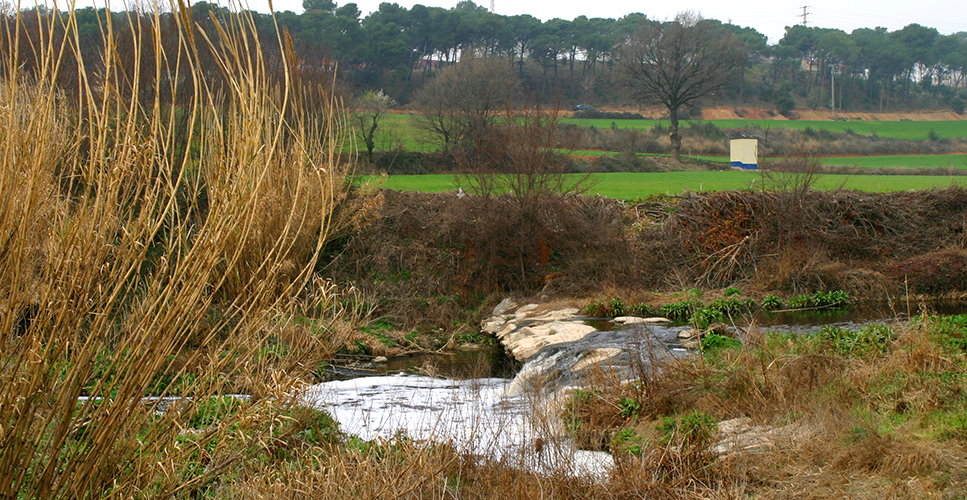
Semi-circular route that follows a stretch of the river Ripoll at the level of Barberà del Vallès.
ROUTE
We come out of the riding centre by the access road, towards the river, in a south-easterly direction. We do this first stretch between sun and shade of white pines, holm oaks and elms of small leaves that are on the left margin. We take the route of the river that we will follow for a good stretch, plain and easy to do. On the right we leave the entrance of the mill d’en Santo. To the left there is a row of pine trees,
that links with a few vegetable gardens where we can see a great agave. To the right, we go through some old industrial units, a horse riding centre and then we see the river between American canes.
The outcrop of water is scanty, it is a river that runs underground. The riverbed width is due to years of erosion and occasional avenues, especially in Autumn.
We will arrive to the road of Barberà to Santiga, which we will cross and we will continue on the wide route of soft soil. To the left we have the wooded margin of pine and oak and some fig trees. To the right we have the views of the river. Despite the fact that some days the water may appear turbid, the quality is already quite good due to the debugging tasks of the waters both urban and of industry. In fact, since a few years ago aquatic biodiversity has improved with the presence of small invertebrates and we can see different species of animals: families of neck-green ducks, herons, egrets and even kingfishers if we have enough view, among others. On the other side of the river, we see a great hoisting of the margin, with the city of Barberà del Vallès at the level of the hermitage of La Románica (the Romanesque).
We will leave a detour to the left, under a holm oak, and we will continue down to the next way to be heading for by the margin, between a young oak forest with a very clean undergrowth: some bramble creeper and Mediterranean buckthorn, keeping the river on our backs.
We begin to see the back side of the industrial site of Santiga and, once on top, we will find on the right the castle of Barberà (behind). We will go ahead and to our left we will find a route that leads to a field, with different native tree species planted. We will border it and recover the way by which we have come.
When we find the detour to the right, we take it and we go carefully down to the river path, since it is a route with steps. Once all the way down, we will find the river Ripoll in front of us and we will have to take to the right the same way by which we have come from. We do this stretch again up to the riding centre, now with views of Sant Llorenç at the back.
ACCUMULATE GRADE

DON’T MISS…

River Ripoll: the river has been used for centuries by the agriculture and subsequently by the industry. The urban growth and industrialization lead it into a process of degradation in the 1950s. Later, in the middle of the 1990s, the process was reversed thanks to the development and implementation of the comprehensive recovery plan of the river Ripoll and today we can say that the Ripoll returns to enjoy good health and that Sabadell has rediscovered its river and the richness of its landscape.
Molí d’en Santo: old paper mill located near the river Ripoll. It is documented since 1660. It consists of two naves in the form of “L”, both covered with gable roof. It has a ground floor and two floors. The upper floor served as a drying room that is why it has so many windows.
Ca n’Altamira: square tower of about 8 meters high. Despite the fact that the original construction was higher, with the construction of the masia that surrounds it, it was cut the top to fit it in the building. Currently it consists of two spaces: the ground floor and the upper floor. Ca n’Altimira was a watchtower and a gated community for the defence of the castle of Barberà.
The Castle of Barberà: documented in 1005 through a testamentary dispositions of Guitard, who did deliver the castle in equal parts between the headquarters of Barcelona and the basilica of Sant Miquel Arcángel. The count of Barcelona, in 1599, passed it to the Galcerán de Pinós family, whom were appointed marquis of Barberà in 1702 by Philip V of Spain. The old castle of Barberà has been converted into a masia and, with the exception of a wall, it does not retain many vestiges of fortification. The chapel of the castle, dedicated to Santa Coloma, was documented in 1006. From the 18th century, the chapel is dedicated to Santa Paloma and Sant Jaume. Lost its condition of agro-livestock use and uninhabited, it became property of the Town Hall of Barberà del Vallès in 1988.
SUGGESTIONS
The mill d’en Gall, the church of Santa Maria de Barberà (La Románica), Can Gorg and the centre of Santiga are points of interest near this route.
Also you may be interested in…




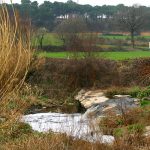
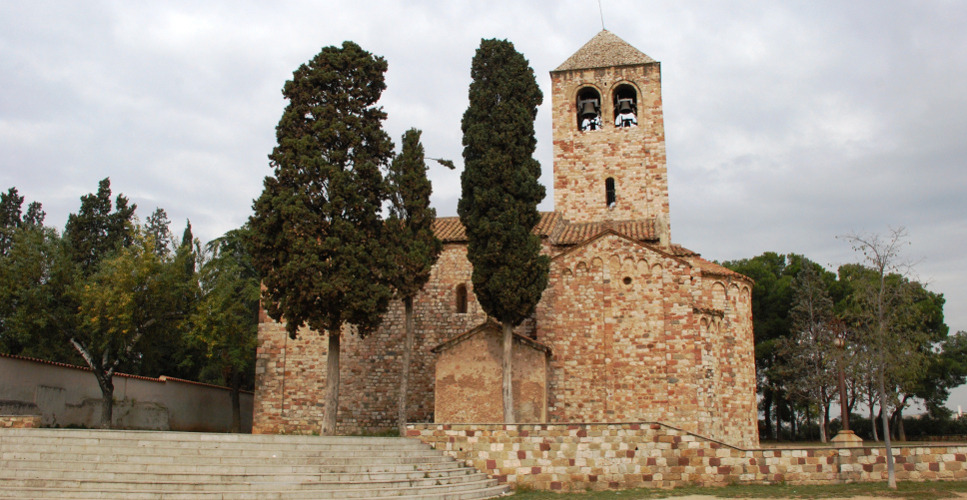
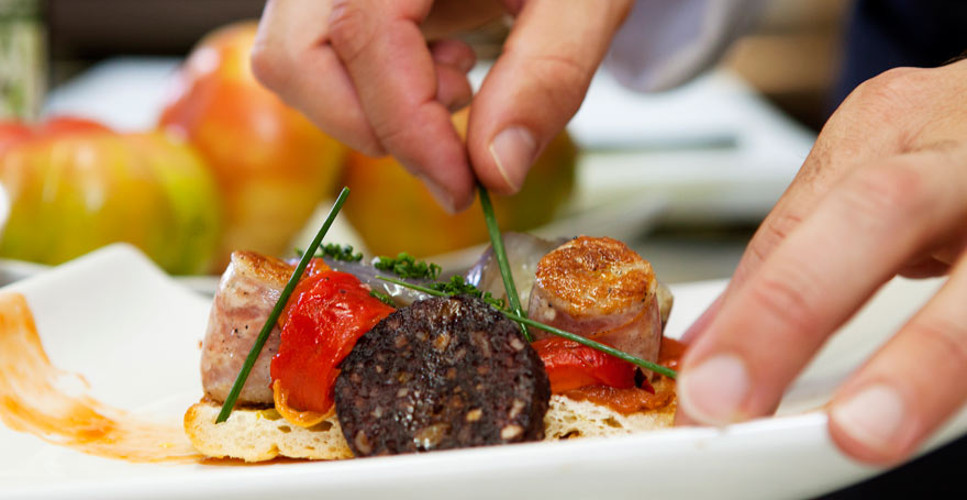
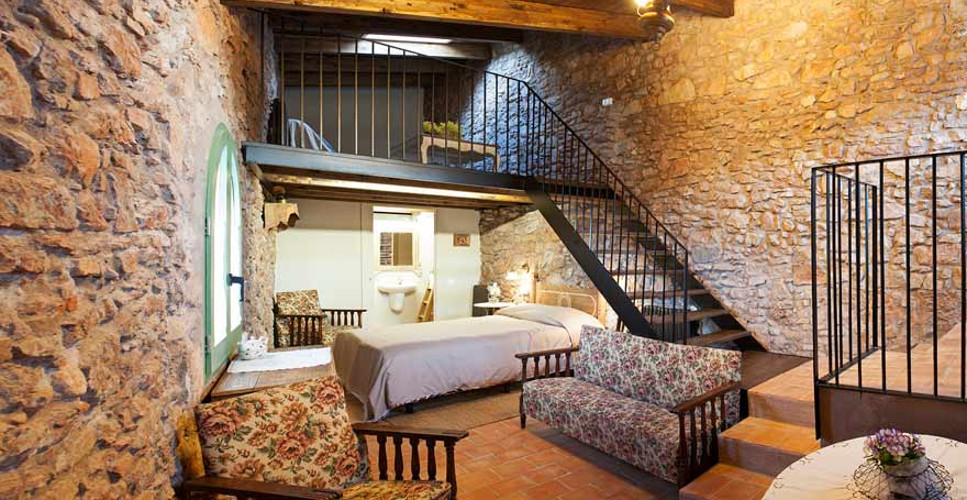
No Comments